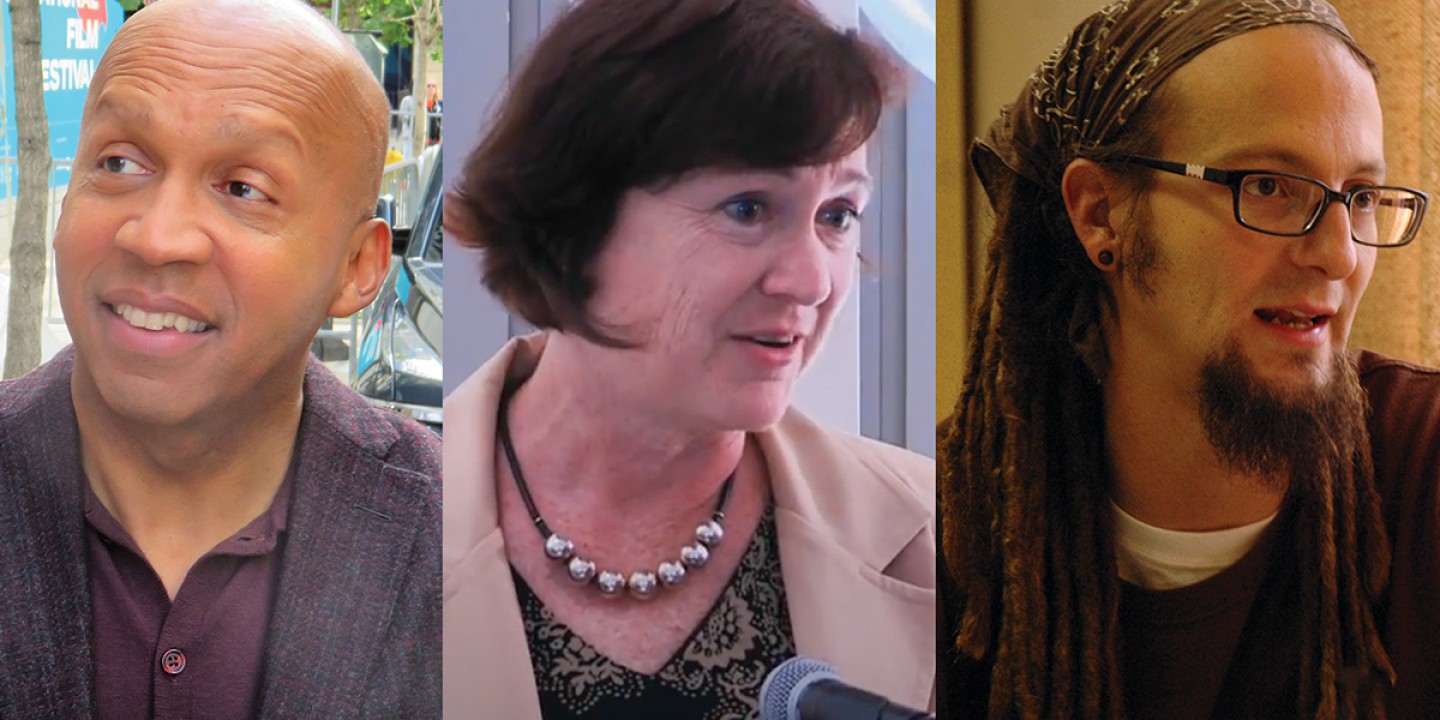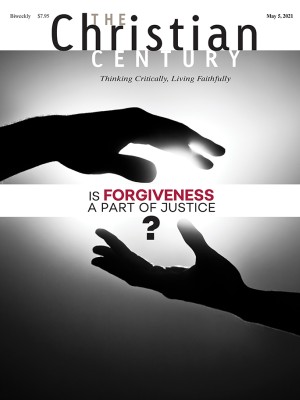Eastern University has served as the evangelical left’s laboratory
The school has produced limited doctrinal controversy—and a lot of prominent advocates for justice.

Set on the grounds of an old estate in the leafy Philadelphia suburbs, the campus of Eastern University signals gentility, restraint, and respect for tradition. After all, the university, originally known as Eastern Baptist Theological Seminary, was founded in 1925 to raise up future ministers.
But impressions can be deceiving. While there is indeed a strong respect for tradition at Eastern, the school has also been something of a maverick among evangelical colleges. Before there was a self-identified evangelical left, Eastern was its laboratory, distinguished by its emphasis on social action more than on individual transformation.
Read our latest issue or browse back issues.
The driver behind Eastern’s down-to-earth approach to social justice could be called simply “the Campolo effect.” Tony Campolo, a seemingly indefatigable whirlwind of canny idealism, came back to his alma mater in 1964 as a professor of sociology. He was soon appointed chaplain as well. Campolo rallied undergraduates at Eastern—and before long, from across the country—to venture outside their classrooms and into the most economically disadvantaged areas of America’s cities.
“What I was able to do was to recognize young men and women who had entrepreneurial gifts, who knew how to create organizations,” recalled Campolo, who used the term praxis to describe his very practical, hands-on approach to learning. “I would raise money, get volunteers, and then turn them loose.” He added that his goal was for “students to be changed”—and that such change comes through action. “Saying yes to simple propositional statements to become a Christian was not enough.”
Campolo had an appeal to undergraduates, one that quickly made him a national phenomenon. At the seminary, it was Ron Sider who embodied the school’s twin emphases on theology and social action.
“Eastern would be little more than a small American Baptist denominational school if it wasn’t for Sider and Campolo,” said John Fea, a historian of religion at Messiah University. “They put the place on a national stage and turned it towards social justice.”
Today, Eastern continues to be marked by its social engagement with the city nearby. And generation after generation, the school has graduated faithful activists determined to leave their mark on the culture around them.
Student-led activist organizations. Faith-focused arts and worship groups. An intellectually diverse faculty willing to openly explore difficult questions. Financial support that made it possible for students without a lot of resources to pursue higher education. These elements of the Eastern experience came up again and again in conversations with graduates, students, and administrators.
Eastern Tennessee native Shane Claiborne cofounded The Simple Way—a neighborhood-based intentional community in a low-income part of Philadelphia—in 1998, the year after he graduated from Eastern.
“I loved the sense of trust and freedom I experienced at Eastern,” he said. “It is one of those places very empowering to students.” Claiborne cited the student-led gospel choir, student-sponsored worship services, and a group launched by Claiborne and his friends (still active today) known ironically as the YACHT Club: Youth Against Complacency and Homelessness Today.
He recalled that while he was there, the student body advocated for higher wages for the housekeeping staff and pressed the school to commit to using renewable energy.
Like Claiborne, Jonathan Wilson-Hartgrove (class of 2003) grew up in a small southern town steeped in the politics of the evangelical right. After hearing Campolo preach at Wake Forest University and after consulting with William Barber (then the North Carolina chapter president of the NAACP), Wilson-Hartgrove came to Eastern, where he got involved in advocacy work and worship life.
Wilson-Hartgrove sees Eastern as a center for a strain of American evangelicalism—he noted the work of abolitionists and civil rights icons like Fannie Lou Hamer—that has never seen any contradiction between vibrant faith and social justice. Now a writer, speaker, and member of the steering committee of the Barber-led Poor People’s Campaign, Wilson-Hartgrove sees Eastern graduates going out to share the values intrinsic to their heritage, whether it’s promoting racial equity or working in the world of international development. “Lifting up the voice of marginalized people is an important part of the Eastern story,” he said.
University of Pennsylvania psychology professor Howard Stevenson, a 1980 graduate, arrived at Eastern already grounded in a justice-centered spirituality due to his background in the African Methodist Episcopal tradition. He commended Eastern for sending students abroad “to learn how other people have been mistreated by those who call themselves religious.”
“College is a time when you start to ask different questions about meaning, becoming more unsettled,” he said. “If you are going to become unsettled, you need support and affirmation and honor. I found that to be the case at Eastern.”
Stevenson estimates that the student body at the time, while more diverse than that of other evangelical schools, was still just 10 percent people of color. “We literally protected ourselves by eating together,” he said, “a safe haven from any negative racial experiences.” (By 2019, according to data in the school’s official factbook, White students made up a minority of Eastern’s entering undergraduates.) Along with being an all-American athlete, Stevenson sang in the gospel choir. The camaraderie he found there, along with encouragement from Eastern faculty, helped prompt him and other students of color to pursue advanced degrees, he said.
“I wasn’t intimidated,” said his younger brother Bryan Stevenson, founder of the Equal Justice Initiative and best-selling author of Just Mercy, who followed Howard at Eastern a year later. “I felt confident that when I left Eastern, I had a sense of what mattered,” Bryan said. “I was comfortable with the idea that I wanted my life to be purpose driven.”
He also recalled that other Christian universities seemed to lack even the limited measure of racial diversity that he and his brother found at Eastern. And as the student body became more diverse, there was an increased urgency to address questions that churches had often ignored, he said. Eastern was “always rooted in an idea of helping the church be more responsive to the demands of justice.”
Darla Spence Coffey agrees. “I was looking for a community of activists,” said the first-generation college student, who graduated in 1983. “I didn’t choose Eastern. It chose me.” Coffey, president of the Council on Social Work Education, describes a “sweeping social justice commitment awakened by my life at Eastern.” She hopes to move back to the area when she retires and perhaps to reconnect with the school that helped channel her passion for service.
How has Eastern been so successful at dodging doctrinal battles and schisms? The Baptists who founded the school managed to avoid the controversies that sundered denominations in the early 20th century, and it has remained relatively free from doctrinal controversy. Provost Kenton Sparks said Eastern is characterized by a “more open stance to the world, not a more fundamentalist approach. Though we’ve had flirtations with insularity and a tendency to try to reconnect with more conservative evangelical traditions . . . we never really went there.”
There is, however, some tension and ambiguity as to where Eastern stands on questions of sexuality. Officially the school welcomes LGBTQ students, and it occasionally hosts discussions about sexuality. There is a student-led club, Refuge, that advocates for the LGBTQ campus community. Yet Eastern is still grappling with a statement in the student handbook that claims a sexual lifestyle consistent with biblical teaching requires avoiding “inappropriate displays of affection” and “sexual intimacy . . . outside of marriage between a man and a woman.”
“As a community, we aspire to be known for our unity and our love, two things that transform us. They propel us into our mission of faith, reason, and justice,” said Eastern president Ronald Matthews in a statement when asked about the school’s current stance on sexuality. “Therefore, we believe that the Holy Spirit of God will lead us in justice and peace as we examine and develop our present and future policies.”
After graduating in 1995, Amy Perez worked at Eastern as a student adviser from 2008 to 2016. She praised the school-sponsored conversations on human sexuality that took place while she was working there but said she was taken aback by some of the comments she heard from students. She wished the school could become a place where LBGTQ faculty “could work and be safely open about their orientation.”
On the other hand, said Perez, “I do think that Eastern is still a place where you can speak up.” She said that while on staff, her goal was to “make sure to ask a lot of questions, challenge assumptions, and make sure you know why you believe what you believe.”
Decades after Campolo first commissioned students to work with children in Philadelphia’s poorest neighborhoods, Eastern continues to invest—both strategically and financially—in city ventures. For example, a longtime relationship between Eastern and Claiborne’s The Simple Way has borne fruit in the establishment of Simple Way Scholars. Students from the under-resourced neighborhood where The Simple Way community lives are able to attend Eastern tuition free—with books and emotional support provided by the group, said Simple Way executive director Caz Tod-Pearson.
Junior Desirae DeJesus is one of those students. The culture at Eastern, said the first-generation college student, is one of service oriented toward justice. While growing up DeJesus heard that God is vengeful, she said, “school has changed my mindset. God is a God of justice,” wanting to set his people free.
Sparks suggested that the next social justice frontier for the school is criminal justice reform—with Eastern professor Kimberlee Johnson at the forefront as director of the Prison Education Program and the Center for Community Engagement. The latter offers an array of programs oriented toward Philadelphia residents: workshops on topics like mental health and financial management, student internships, low-cost space for community nonprofits, ongoing education programs for those currently or formerly in prison.
“Education does have a transformational impact on people,” said Johnson. “Because we are Eastern, we are able to be a Christian presence as well.”
Sparks acknowledged that Eastern’s yoking of social justice and academia is not unique in the way it once was, now that secular universities have become more focused on social concerns. “A big part of our social justice–oriented program was Tony Campolo,” he added. “You can’t manufacture and bottle what he did.”
“I think Eastern was well ahead of the curve on these social justice issues,” said Fea, commenting on the school’s relationship to the larger evangelical world. “Campolo was preaching this stuff when it wasn’t fashionable in the evangelical world. And he took a lot of heat for it.”
It seems to have paid off for Eastern. Enrollment numbers are strong, Sparks said, with a substantial number of more conservative students still drawn by Eastern’s faith profile. “Most young people are a little bit tired of taking sides,” he said.
“I feel a tradition was entrusted to me that I was to pass on to others,” said Wilson-Hartgrove. “It’s the broader movement of Jesus and justice, for which Eastern is an institutional home.”
A version of this article appears in the print edition under the title “Training the evangelical left.”






